Cedar wood is among the best materials to use for building a fence. This however comes with precautions especially when selecting or using the correct type of fastener or nails. Read on, we are here to give you a better understanding of which nails to use for a cedar fence based on our research.
Cedar wood contains natural acid that can be corrosive to ordinary nails. The best nails that go with this material are stainless steel or aluminum because they do not form dark streaks and are each corrosion-resistant.
When choosing the best nails, you have to consider several factors such as the durability, length, area where you live, and the type of wood. All these aspects have a considerable effect on both the wood and the nail. Fortunately, we are here to guide you every step of the way.
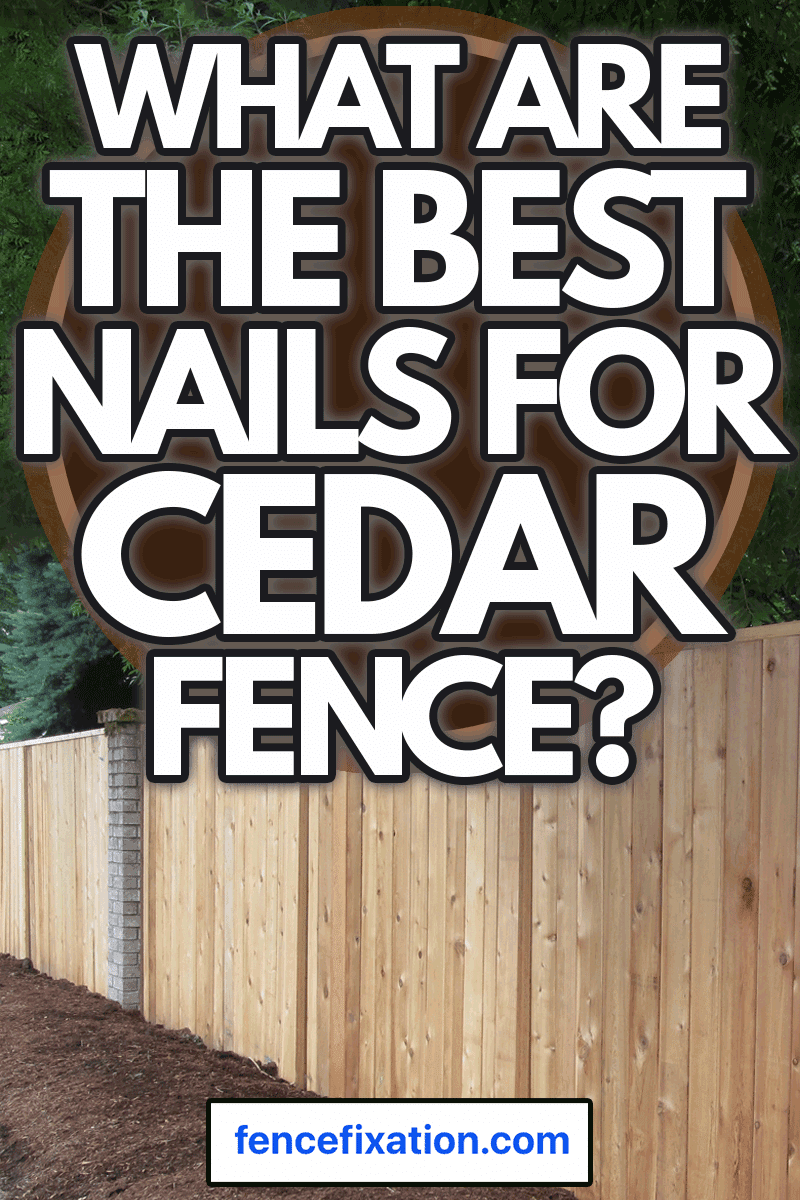
Why do you need to choose the right nails for cedar wood?
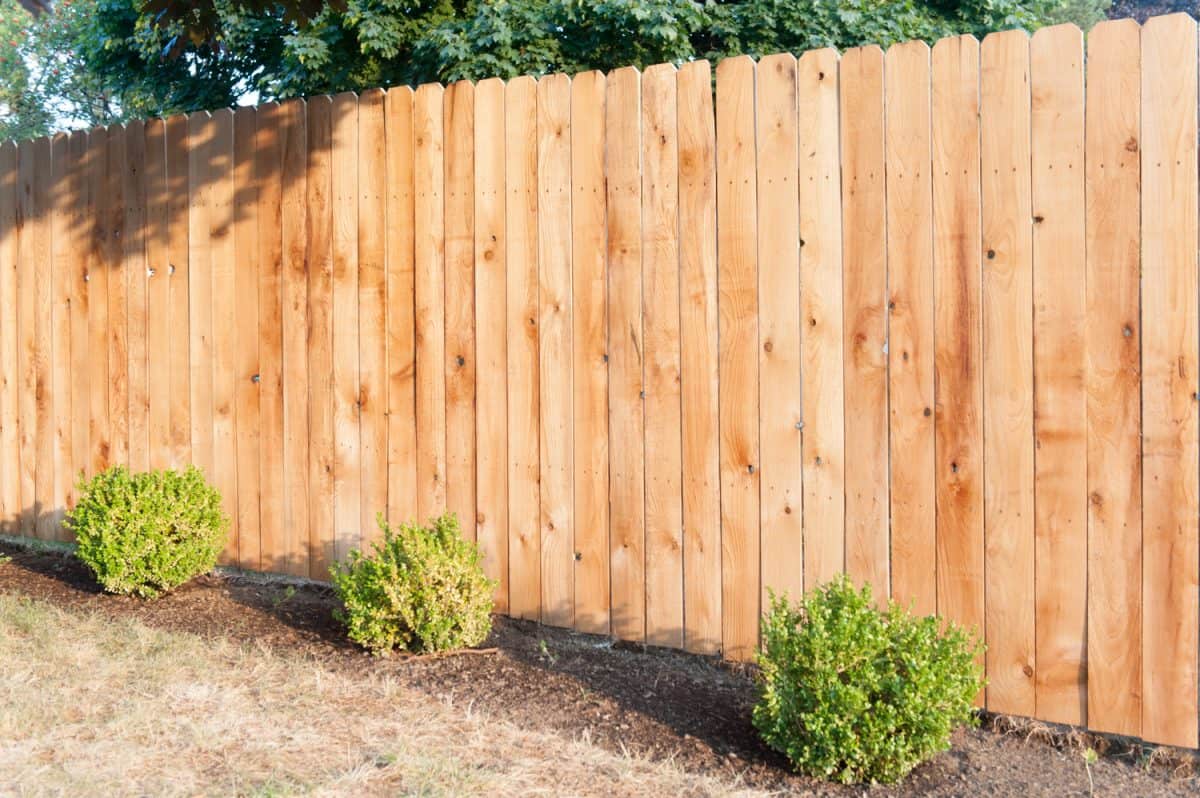
Before we delve deeper into the topic, we must first know the importance of selecting the correct nail, especially for cedar.
You must understand that some types of metal hardware will erode, bleed, and discolor cedar varieties because certain nails react with the natural acid that is within this type of lumber.
The kind of fasteners you intend to use also have a relative effect on the variety of the cedar wood. For instance, hot-dipped galvanized nails work fine for white cedar but not for red because the former has lower tannin content.
Note: You can use double hot-dipped galvanized nails but they are not the best option because they will eventually stain your cedar fences. If you still wish to use this fastener, remember that it should have a thick coating to avoid early cracking or flaking.
Best Nails For Cedar Wood
Before selecting which type of nail to use, you might consider using 6-d (2-inch) nails to fasten pickets or boards, and 16-d nails to secure rails.
Stainless Steel
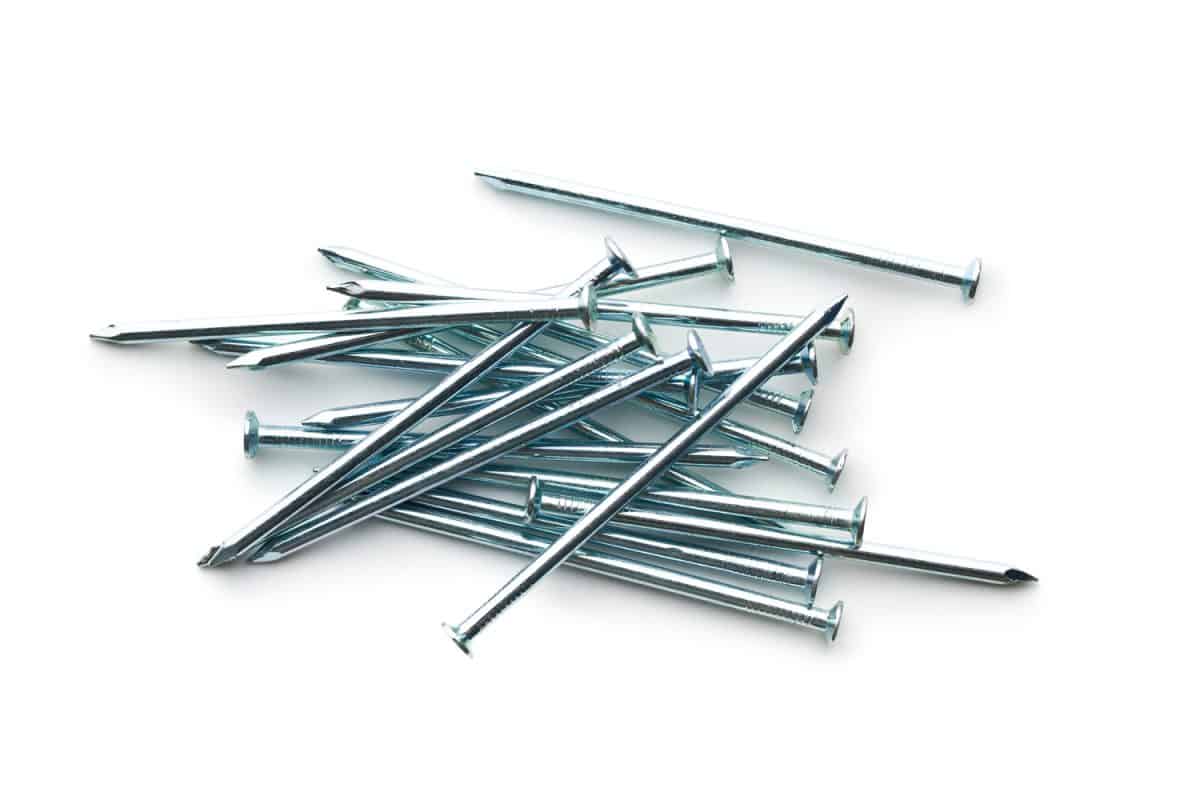
Stainless steel nails, specifically 304 or 316, are the best fasteners for a cedar fence due to their rust-resistant and weather-resistance quality. It can withstand harsh weather conditions, and it is the most recommended material for Cedarwood.
Aluminum
Aluminum is also corrosion-resistant because it contains almost no iron. It is the best alternative for stainless steel because it neither stain nor forms dark streaks or bleeding. However, it is less durable in coastal areas and wet conditions.
What fasteners can be used for a cedar fence?
Nails, screws, and rivets are materials that can be used to secure the railing and the pickets of a fence. Each fastener differs in quality, installation, and durability.
Nails: Stainless Steel
Nails are the most common material that is used when fastening wood and other objects. They are cheaper and much easier and faster to install especially if a nail gun is used. Nails also have a wider range of options you can choose from.
Check out these Stainless Steel Nails on Amazon.
Screws: Aluminum or Stainless Steel
Screws offer the best strength and durability when utilized on a fence. Inasmuch as using screws takes more time and effort, it is however more hardwearing and long-lasting. The spiraling threading on screws gives it a better grip on the wood.
It is a better option than nails simply because it is able to adapt to the physical changes of the wood such as shrinking and expansion.
Check out this Aluminum Metal Screw on Amazon.
Check out Stainless Steel Screws on Amazon.
Rivets: Aluminum
When riveting wood, it is best to use aluminum pop rivets because they are designed to be used on soft materials. The ends basically curl up on impact which provides better and stronger resistance against being separated.
Check out Aluminum Blind Pop Rivets on Amazon.
How do you nail a cedar board fence?
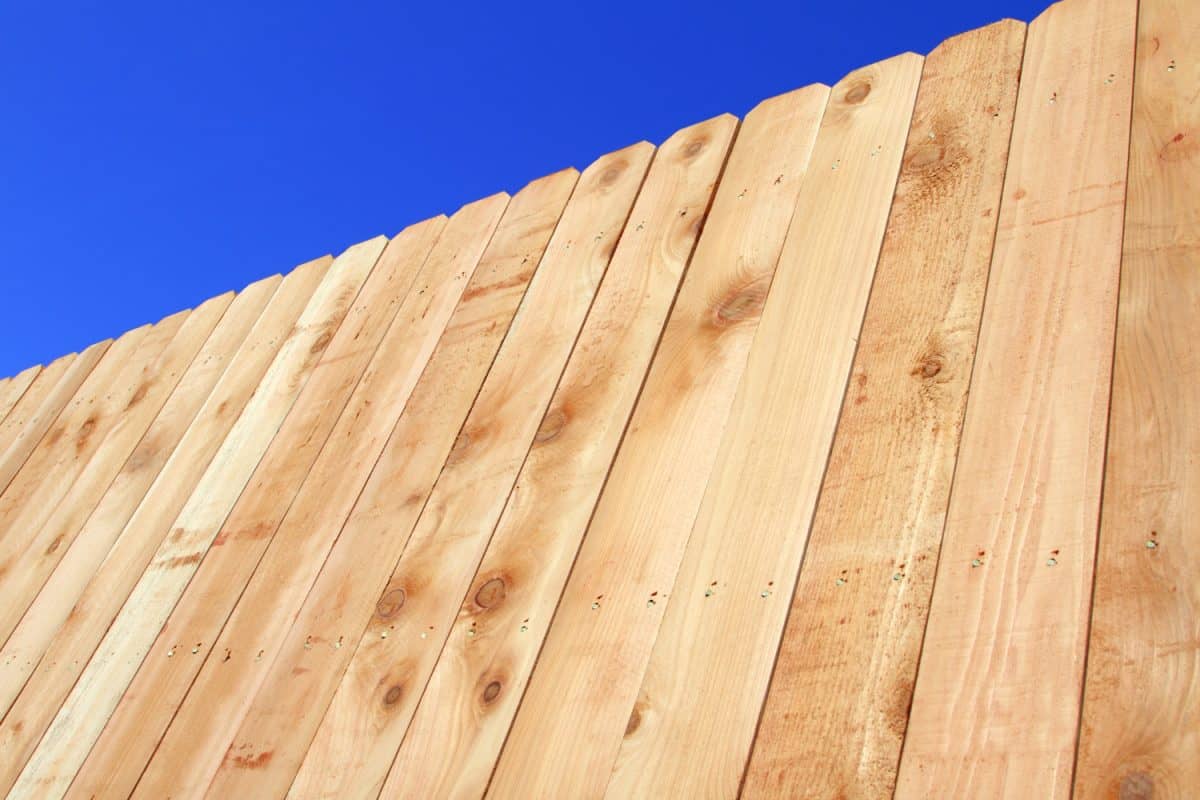
1. Select the best nail
Choosing the best nail before attaching the cedar board is the most significant step. Preferably use nails that are about 1-1/4 inches longer so that it sinks deeper into the wood.
2. Follow safety precautions
Use a pair of safety goggles to safeguard your eyes from any unwanted debris. Wear leather gloves to protect your hands against splinters.
3. Insert a nail into the board
For this method, you can simply use a hammer or a nail gun. Whichever you prefer, either works. Hold the board onto the railings, and then pound the nail with your hammer or pull the trigger on your equipment to insert the nail.
Take note, it is recommended to place the nails in varying heights to ensure that the fence is more stable.
What are the various types of cedar wood used for fences?
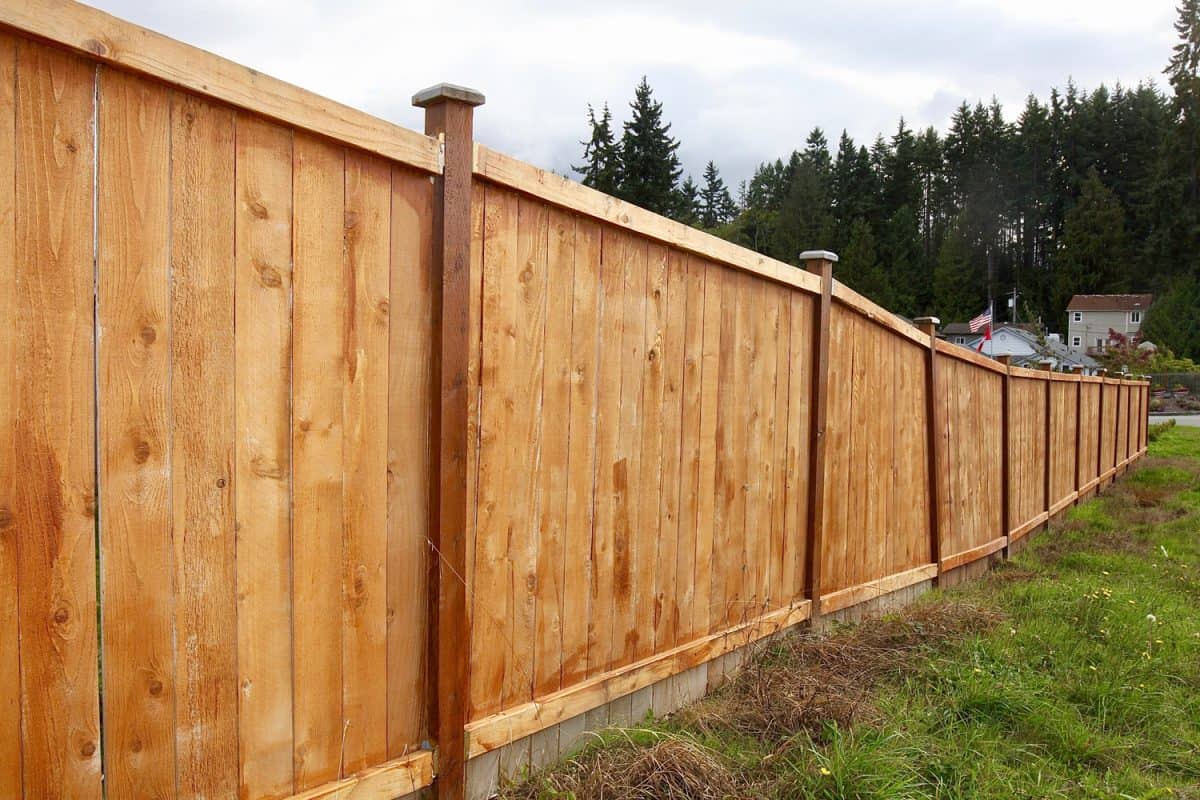
Cedar wood comes in several varieties that have their own unique qualities. When deciding which one to use, take note that red cedar has high tannin (acidity) levels than its white counterpart making it corrosive to ordinary nails.
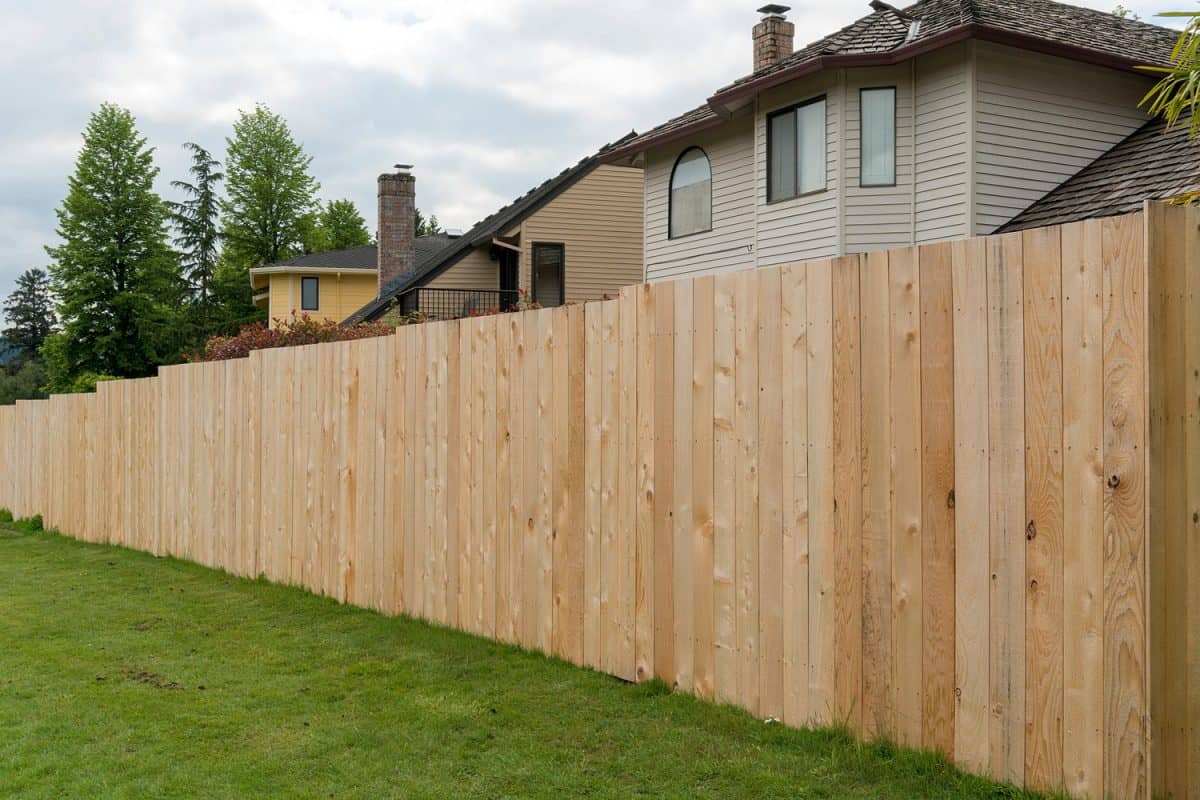
Northern White Cedar
Northern White Cedar consists of natural oils that safeguard this wood against mold, moisture, insects, rot, and warping without the need for any supplemental chemical treatments. This wood is environmentally friendly and biodegradable since it does not require any lumber treatments.
Fences that are made from this material can last for 15 to 30 years which is why it is a better investment than low-quality woods.
Eastern Red Cedar
Eastern red cedar is similar to its Northern counterpart. The only difference lies within its durability because red cedar is slightly stronger than white. This type of wood is less prone to knotting.
Western Red Cedar
Western red cedar is proven to be the most decay-resistant among all the kinds of cedar woods. The color varies from deep brown to light-yellow gold. Nonetheless, the heartwood still has the blushed-red color associated with cedar.
Atlantic White Cedar
Atlantic white cedar is basically known for its durability and excellent weather-resistant quality. It is a non-splintering wood that contains a rich pleasant aroma.
How to maintain a cedar wood fence?
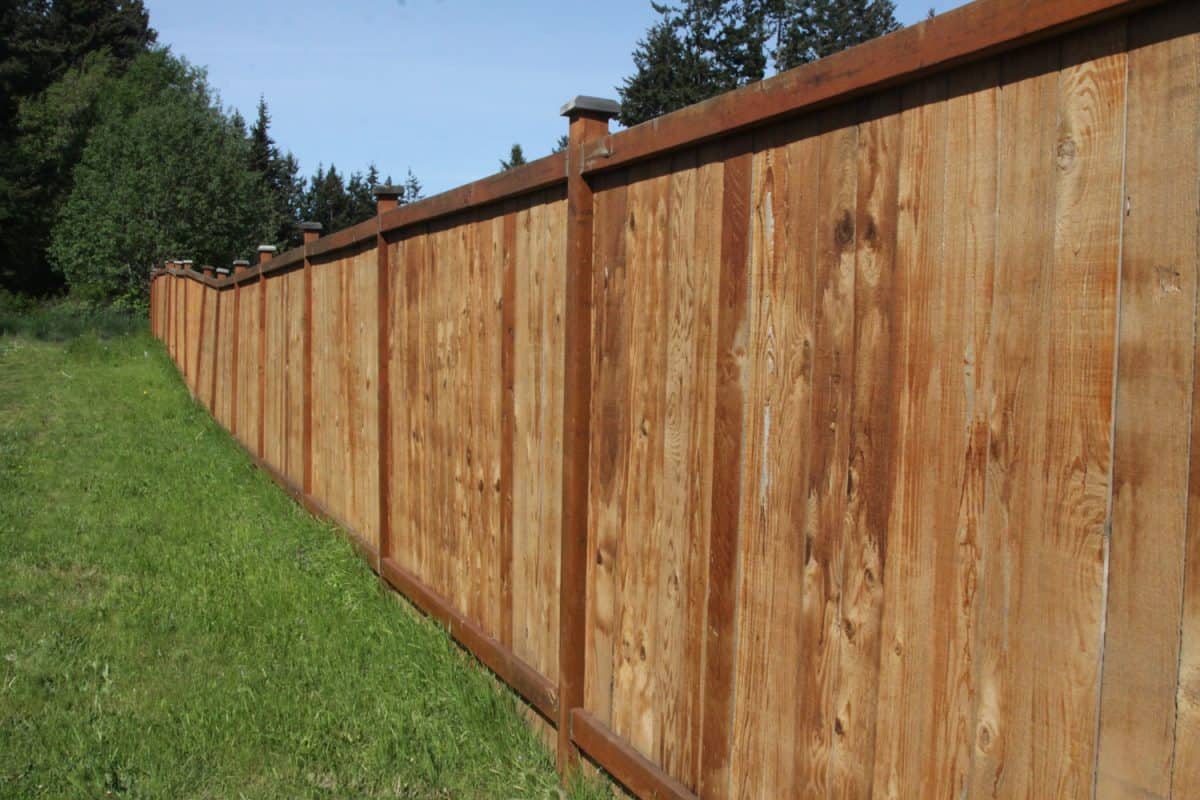
Cedar wood fencing is an ideal choice for outdoor structures such because of its natural protective quality against warping and rotting. Over time, your cedar fence will turn gray because of dirt and harsh weather.
Proper maintenance will keep the wood stained-free and aesthetically pleasing. When neglected, it can result in costly maintenance repairs. Remember to do this cleaning activity once a year.
Use a Spray Power Washer
To clean, spray the fence using a power washer. Be sure to monitor the pressure settings so that it sprays with a pressure of 1,500 to 2,000 pounds per square inch. This activity will wash away the outer gray layers, exposing the blushed-red lumber underneath.
Do not worry! This would not damage the wood as long as the nozzle is 18 inches away from the fence.
Utilize a Mixture of Warm Water and Oxygen Bleach
To remove dirt and mildew, spray the fence using a garden sprayer with a mixture of 3 quarts of warm water and 1-quart oxygen bleach. Scrub the area with a brush then allow the substance to sit for at least 10 minutes before rinsing it with clean water.
Check the Fence for Loose Sections
To ensure its durability, inspect your fence for any loose nails or screws then tighten or replace them.
Coat the Wood with Sealant
Although cedar wood has a natural oil that protects it from moisture, rot, and warping, coating this wood with sealant is also applicable.
Remember to wash the fence first and allow it to dry before each application.
After applying, let the sealant dry then perform a second coating. It is advisable to re-apply the sealant every three years.
In Closing
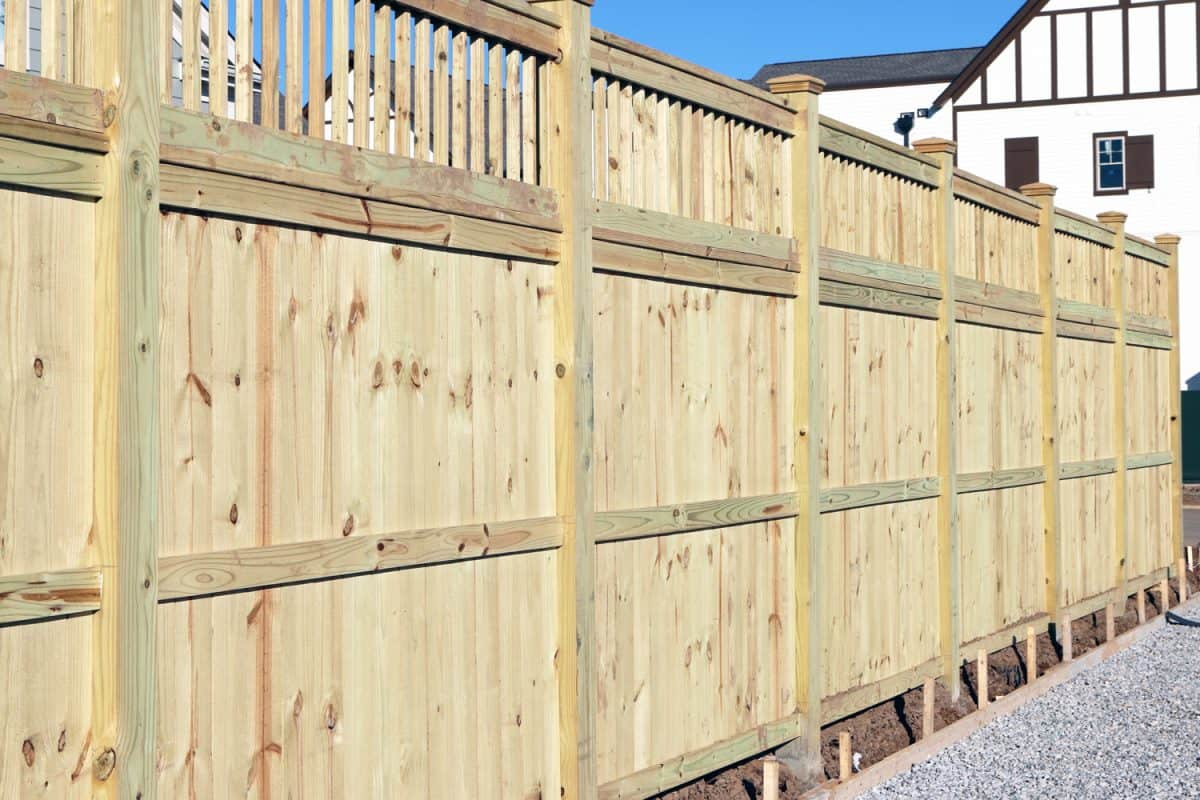
Always remember to keep closer tabs on the materials you will use when building a fence. Nails may seem less significant but they hold greater importance because they have a factor in determining the lifespan of your Cedarwood.
If you have found this article helpful, check out these other informative topics:





![A grass meadow and a small fence next to a small pond, How Long Does Split Rail Fence Last? [And How To Prolong Its Life]](https://fencefixation.com/wp-content/uploads/2022/06/A-grass-meadow-and-a-small-fence-next-to-a-small-pond-600x400.jpg)

![White rail fence leading along cornfield and deep blue sky. How Tall Are Split Rail Fences [Inclding 2, 3, & 4 Rail Heights]](https://fencefixation.com/wp-content/uploads/2022/06/White-rail-fence-leading-along-cornfield-and-deep-blue-sky.-How-Tall-Are-Split-Rail-Fences-Inclding-2-3-4-Rail-Heights-600x400.png)